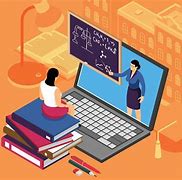
The classroom, once the exclusive domain of learning, is undergoing a seismic shift. Gone are the days of rigid schedules and one-size-fits-all approaches. In its place, a vibrant, evolving ecosystem of online learning platforms is springing up, empowering learners of all ages to chart their own educational paths. These platforms are not simply replacing traditional classrooms, but rather augmenting and enhancing the learning experience, offering unprecedented flexibility, accessibility, and personalization.
From massive open online courses (MOOCs) to interactive simulations and personalized learning tools, the digital realm has become a dynamic educational landscape. This paradigm shift in education has the potential to unlock unprecedented possibilities, breaking down geographical barriers, fostering collaboration, and making quality education available to a wider audience. But with this new world of online learning comes a crucial question: How can these platforms effectively navigate the challenges and maximize their potential to truly transform the future of education?
This article delves into the heart of this exciting revolution, exploring the benefits and challenges of online learning platforms. We’ll investigate the transformative potential of this new landscape and examine the role they play in shaping the future of education. Buckle up, because we’re taking a deep dive into the exciting world of “beyond the classroom.”
Beyond the Classroom: How Online Learning Platforms Are Changing Education
Related Post : Telegram gives explanation after their boss was arrested in France
The world of education is undergoing a profound transformation, fueled by the rise of online learning platforms. These platforms are revolutionizing how we learn and teach, offering unprecedented flexibility, accessibility, and personalization. This article will explore the evolution of online learning, delve into the benefits it offers, and examine how it’s shaping the future of education.
What is Online Learning?
Online learning encompasses any educational experience that takes place over the internet, utilizing digital tools and resources. It encompasses a wide spectrum of learning modalities, ranging from asynchronous self-paced courses to live virtual classrooms.
Defining Online Learning:
- Key characteristics of online learning include:
- Asynchronous learning: Students can access course materials and complete assignments at their own pace and convenience.
- Interactive learning: Online platforms often incorporate multimedia elements, interactive exercises, and discussion forums to engage students actively.
- Flexible delivery: Online learning allows students to learn from anywhere with an internet connection, eliminating geographical and time constraints.
- Distinguishing online learning from traditional classroom instruction: Unlike traditional classrooms, online learning emphasizes independent learning, self-directed study, and digital communication.
Types of Online Learning Platforms:
- Massive Open Online Courses (MOOCs): MOOCs are complimentary or low-cost online courses offered by universities and institutions, attracting a vast global audience.
- Virtual Learning Environments (VLEs): VLEs are online platforms used by educational institutions to deliver courses, manage assignments, and facilitate communication between students and instructors.
- Learning Management Systems (LMSs): LMSs offer a thorough platform for managing and delivering online courses, tracking student progress, and facilitating communication.
benefits of Online Learning
Flexibility and Accessibility: Online learning offers unmatched flexibility, allowing students to tailor their learning experience to their individual needs and schedules. They can access course materials and complete assignments at any time, from any location with an internet connection. This flexibility is especially beneficial for working professionals, parents, and individuals with mobility limitations.
Cost-efficacy: Online learning can be significantly more affordable than traditional education, as it eliminates expenses related to commuting, textbooks, and campus facilities. Many online platforms offer complimentary or low-cost courses, making education accessible to a wider scope of learners.
Personalized Learning: Online learning platforms excel at providing personalized learning experiences, tailoring instruction to individual learning styles and needs. Adaptive learning algorithms track student progress and adjust the difficulty level of text accordingly, ensuring that learners are constantly challenged and engaged.
The Rise of Online Learning Platforms
The Impact of Technology on Education: The rapid advancements in education technology have played a pivotal function in the rise of online learning. The internet has democratized access to information, making it possible for anyone to learn from experts around the world.
The function of the Internet: The internet has been the catalyst for the growth of online learning, providing the infrastructure for global communication, information sharing, and collaborative learning.
Sophisticated and User-Friendly Platforms: Online learning platforms have become increasingly sophisticated and user-friendly, incorporating advanced attributes like interactive simulations, virtual labs, and gamified learning experiences.
Popular Online Learning Platforms
Examples of Popular Platforms:
- Coursera: Coursera offers a wide scope of online courses from top universities and institutions worldwide, spanning various disciplines.
- edX: edX is another leading platform offering MOOCs from renowned universities, providing access to high-quality education for complimentary or at a low cost.
- Khan Academy: Khan Academy offers complimentary educational videos and interactive exercises covering a wide scope of subjects, from math and science to history and art.
- Udemy: Udemy offers a vast library of online courses covering a wide scope of topics, taught by expert instructors.
attributes and Strengths of Each Platform: Each platform caters to varied audiences and offers unique attributes and strengths. For instance, Coursera and edX focus on university-level courses, while Khan Academy offers accessible resources for learners of all ages. Udemy stands out for its thorough scope of courses taught by diverse instructors.
Target Audience: Online learning platforms cater to a diverse audience, including students, professionals, and lifelong learners seeking to expand their knowledge and skills.
How Online Learning Platforms Are Changing Education
Transforming the Classroom:
- Integration into traditional classrooms: Online learning platforms are increasingly being integrated into traditional classroom settings, creating blended learning models that combine online and in-person instruction.
- benefits of blended learning: Blended learning models offer several benefits, including greater flexibility, personalized learning experiences, and boostd engagement.
- Changing functions of teachers and students: Online learning platforms are shifting the functions of teachers and students, empowering students to take ownership of their learning and encouraging teachers to become facilitators and guides.
Expanding Access to Education:
- Accessibility for underserved populations: Online learning platforms are making education more accessible to underserved populations, including individuals in remote areas, those with disabilities, and those who cannot afford traditional education.
- Bridging the digital divide: Online learning plays a vital function in bridging the digital divide, ensuring equitable access to education regardless of geographical location or socioeconomic background.
- Lifelong learning and professional development: Online learning platforms open up opportunities for lifelong learning and professional development, enabling individuals to continuously acquire new skills and knowledge throughout their careers.
The Future of Online Learning
Trends in Online Learning:
- Emerging technologies: Emerging technologies like virtual reality (VR) and augmented reality (AR) are poised to revolutionize online learning, creating immersive and interactive experiences.
- Impact of VR and AR: VR and AR can transform learning by simulating real-world environments, providing interactive experiences, and enhancing engagement and comprehension.
Challenges and Opportunities:
- Challenges: The future of online learning presents both challenges and opportunities. One challenge is ensuring equitable access to technology and digital literacy skills. Another challenge is maintaining the quality and rigor of online education.
- Opportunities: Online learning offers tremendous opportunities to personalize education, expand access to knowledge, and foster innovation in teaching and learning.
The Importance of Critical Thinking and Digital Literacy:
- Thriving in a digital learning environment: Students need to develop critical thinking and digital literacy skills to thrive in a digital learning environment. They need to be able to evaluate information, communicate effectively, and navigate online platforms responsibly.
- Ethical considerations: Ethical considerations surrounding online learning include issues related to data privacy, intellectual property, and the potential for plagiarism.
- Equitable and accessible online learning: Ensuring equitable and accessible online learning for all requires addressing issues of digital divide, accessibility, and affordability.
Conclusion
Key points: Online learning platforms are revolutionizing education by providing flexibility, accessibility, personalization, and cost-efficacy. They are transforming the classroom, expanding access to education, and opening up opportunities for lifelong learning.
Transformative potential: Online learning platforms have the potential to democratize education, empower learners, and drive innovation in teaching and learning.
Exploration: We encourage readers to explore the vast array of online learning opportunities available and embrace the transformative potential of this dynamic educational landscape.



